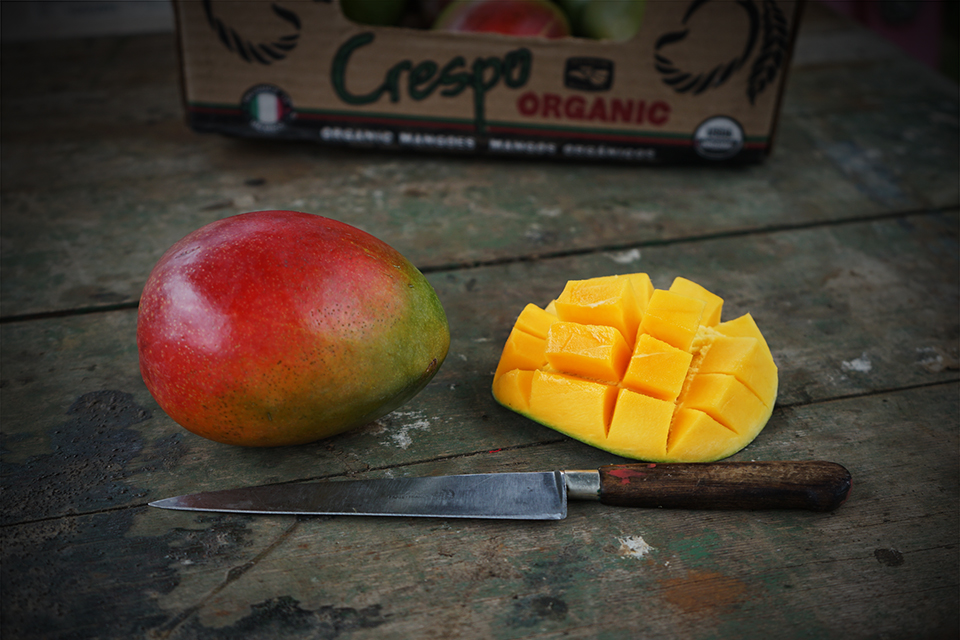Sleuthing through the noise north and south of the border
The truth is not always easy to find. It’s much like self-awareness. You have to have a great deal of will to find it. The current mango market is a strange one that has a lot of folks asking questions about what’s currently happening and what’s next.
In addition to produce being fickle in general, global warming has made forecasting difficult and unpredictable. Making matters worse, the industry is getting ultra-competitive with skinnier profit margins and higher operating costs. Mangoes -all the while- are a booming business. American consumers increasingly clamor for this sweet fruit, and there is little demand slowdown in sight. To-the-minute information is almost impossible to get right and those able to provide it often feel like they’re yielding what little power they have left by sharing it.
It’s no wonder the Mexican mango industry seems to be confused by what’s actually happening and what’s to come. Without clear insight, it’s hard to decide what to do next?
Forecasting Inaccuracies
This Mexican mango season – for both conventional and organics – has been rife with struggle from the get-go. The growers, packing houses, importers, distributors, and retailers have all struggled to keep mangoes flowing and reasonably priced for consumers. Consumers seem to be the only ones who haven’t suffered indicating that the rest of us are doing our jobs right.
Accurate information is still extremely difficult to come by, and the rapidly changing information is both mind-blowing and impossible to keep up with. Industry news lacks any substance, so most of us, even those in the know, are left scratching our heads regarding what’s going to happen next. So, is this the new normal?
Southern and Current Realities
Like everyone else, we started the season shipping organic Ataulfos in February. Around that time, major industry reports about looming mango shortages surfaced. I wrote about the shortage and high prices. The shortage lasted through the last week of April – longer than most projected. There was an excess of small fruit, mostly coming from Michoacán which is known for small fruit (Hadens) which had even smaller fruit than normal. I have heard from several sources that many growers in Michoacán are replacing Hadens with Tommy Atkins, because our markets dislike fruit that’s too small. This is one reason there are not a lot of Hadens left in other regions. The average Haden is usually 12cnt-14cnt, but the market prefers a 8/9cnt average size (conventionally) and 9/10cnt (organically). (You see the problem, right?)
I still can’t put my finger on the problem with the southern regions in general, except there was significantly less fruit than most predicted. Unpredictable weather that was just enough out of the ordinary to make things grew slowly and with many inconsistencies. I argued early on that this Mexican season had potential to produce less fruit, much like Peru and Ecuador. As the orchards go into a dormant phase, they focus on foliage and branch production more than fruit production. In commercial fruit, this dormancy is more difficult to gauge and often impossible to catch ahead of time. I’m not sure if it’s part of the shortage or not still, but its curious.
Guatemala came in late with conventional fruit, peaked rapidly, and went by quickly. Michoacán peaked with smaller than normal sizing and Oaxacan and Chiapas orchard yields were unpredictable size wise and made no sense. Quality wise, growers and packers reported all kids of quality. On the conventional size many grower/packers complained of shrink and lots of substandard fruit from the orchards, but we didn’t see the same thing on the organic side, so again- so more scratching of heads, as quality tends to be regional as opposed to orchard to orchard as we saw this early season.
A few weeks ago, we began to see things shift, and volumes began to increase. But that also doesn’t make much sense, as we are in the end of the season. There should be less fruit at the end? Additionally, many retailers have reported a downturn in sales just prior to the Cinco De Mayo holiday. This is most likely because of the higher prices that the market has seen for an extended period of time, they simply didn’t translate into volume sales. Normally prices, especially on the conventional side, are much lower, going into the Cinco De Mayo holiday, which tends to be a big sales draw for mangoes. There was a lot of fruit, but small fruit, large fruit, the kind most retailers want on display was scarce and high in demand from processors.
Currently there is ample fruit, but pricing and sizing are all over the place, especially conventionally. This greatly disrupts the organic side, even though our sizing tends to be totally different. There are all kinds of conventional folks reporting poor quality and major shrink at the packing house level still, but this still isn’t true for the organic side. The fruit has been looking, tasting, and performing wonderfully, which has helped keep sales on the organic side powerful- retail demand on size 9/10 remains very strong and Ataulfo demand has grown incredibly, most likely a result of those who took advantage of promoting Mexico’s yellow slipper since the beginning when round mangoes were short.
The Transition North to South
As the industry prepares to make the massive shift from the southern into the northern regions, which is akin to changing countries, we’re left with the same questions. Is there a lot of fruit? What are the sizes? What are prices going to be like moving forward? There is a glut of conventional growers talking about lots of fruit coming during and after the transition. But week to week I still see shortages of specific sizing, which makes me unclear about what’s happening.
Some conventional shippers have already started in Nayarit. Some would argue it’s a bit early, and the fruit needs another 10 days for good brix. Still, it’s all hearsay, as I haven’t heard reports of any poor quality coming. I do think growers tend to be tighter lipped on that issue.
From my own sleuthing, which comes from using our Crespo sources on the ground in all states as well as other exporters and distributors thick in the mix; organically and conventionally there will be ample fruit from Nayarit. Orchards are looking healthy and bountiful. Lack of sun, creating less blush tones on some of the mangoes in the orchards, lead me to believe that maybe its not as warm as often and maybe they are slower growing.
The Questions and Some Answers
Prices have been on the higher side for most of the season thus far, but in the last few weeks we have been seeing big price changes (drops) and many have been drastic and out of the blue. We see pricing differences that are wider than average between each size. It’s been difficult to gauge if it’s truly because of excess fruit in the orchards or excess fruit in the market due to lower sales because of the higher prices. Pricing of larger fruit on the CV side is still stable, fueled by crazy demand form processors who need high quality and consistency more than a lower price, as cut mangoes continue to be one of the hottest cut fruit items in retail.
Watch for tightening in the marketplace on all sizes and varietals during the last week of Many into the first week of June when the transition is complete and all southern pack houses will close and Sinaloa still weeks away from starting up.
By the end of May, most shippers will be pulling predominantly from Nayarit. Each week more and more pack houses will open. Empaque Don Jorge, Crespo’s hometown pack house in El Rosario, Sinaloa, will open in about 10 days with brand new stainless-steel hot water tanks and several remaining upgrades that have been part of the full revamp that’s been progressing in the last two off-seasons. A new, even larger cold room presents great opportunities for the volume we keep hearing is coming. (Disclaimer: I heard this back in early March, so I am cautious and ready for either.) Size wise, it’s too early to tell. It depends on how fast the product grows. This has a lot to do with sunshine and warm temperatures, as well as the general health of orchards and certainly global warming and new weather patterns has made the trees behave unpredictably – growth wise.
Roberto Crespo has been on the ground in Nayarit for a while now doing his best to predict what’s next. He tells us that the orchards are extremely healthy this season, and they have a lot of fruit of various sizes. He notices beautiful skin, free of blemishes and scarring (which a lot of the early Oaxaca fruit had because of rains), and smooth dark skin due to less sun (trees tend to be big and full in Nayarit). Size wise for round mangoes (Tommy and Kent, mainly), he predicts Crespo organic to have a good supply of 7-8-9-10 and 12cnts, but it’s too early to tell what the expectation of peak size yields will be.
Ataulfos look equally beautiful and are expected to yield good sizing, 16-18cnt averages with 14 and some 20’s. As we enter into the north replenishment times will be only a few days max versus the 5 days we are currently working with. Which will open up the sales channel for the increased demand for Ataulfos.
Pricing is still a question. At the grower level, we’ve seen fruit prices drop rapidly in the last few weeks as volumes jump and the market prepares for even larger volumes. Pricing of larger fruit is still high and some shortages are excepted when the final transitions happens.
Small fruit is predicted to continue it low price trend. In organics, pressure is mounting, but 9-10 demand continues to be incredibly strong and is keeping pricing outlook somewhat stable. We will have to wait and see how much fruit there actually is before predicting how the price will change in the next month.
Sinaloa is right behind and ready to start in mid to late June. That’s when we expect peak MANGO MANIA pricing to begin and when peak Nayarit collides with Sinaloa and a wall of mangoes is the result. We expect another long season, which is also probably related to global warming, interestingly enough.
Good Factual News
Consumer demand continues to soar. We have seen amazing demand for Ataulfos this season, and we expect to continue to feed the demand through mid to late August. We are currently prepping for the BIG Crespo Organic Summer Mango Mania, preparing for multiple week and month long promotions paired with mango-centric events nationwide. We think it’s going to be one of our best yet!
Email me for more information on how to get in on the Mania!














No Comments